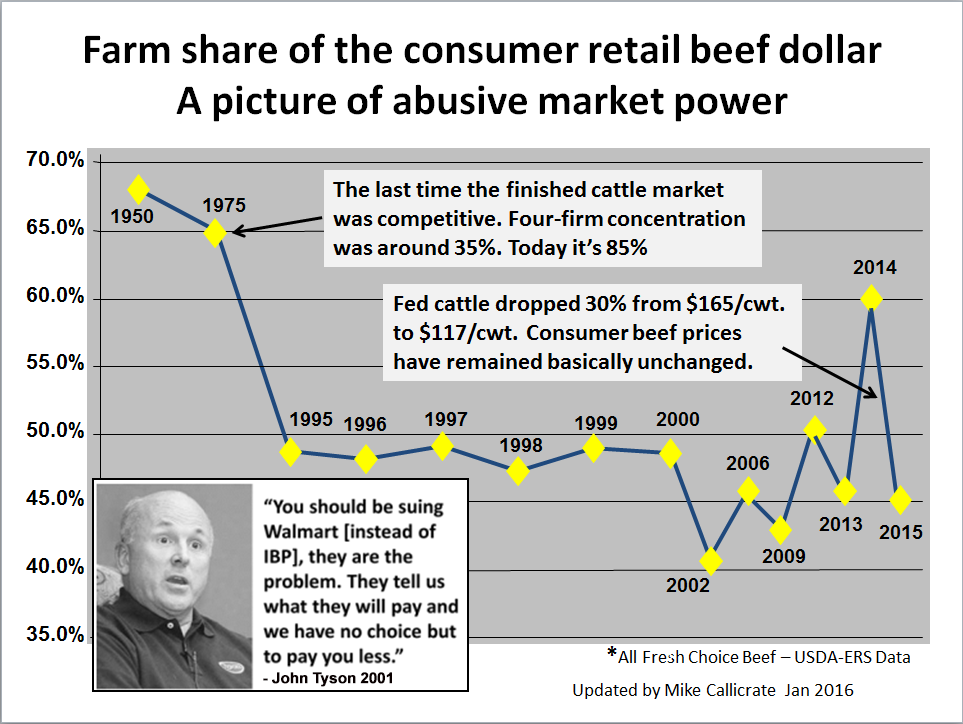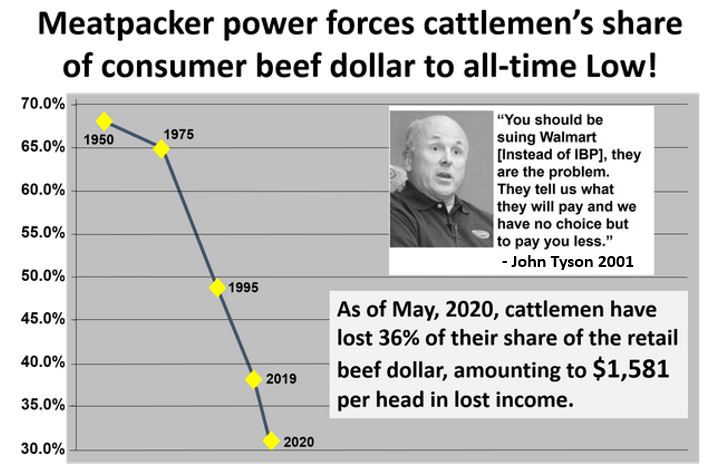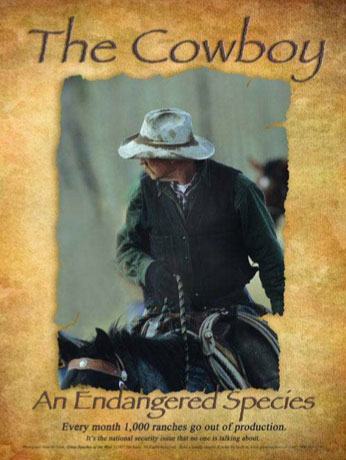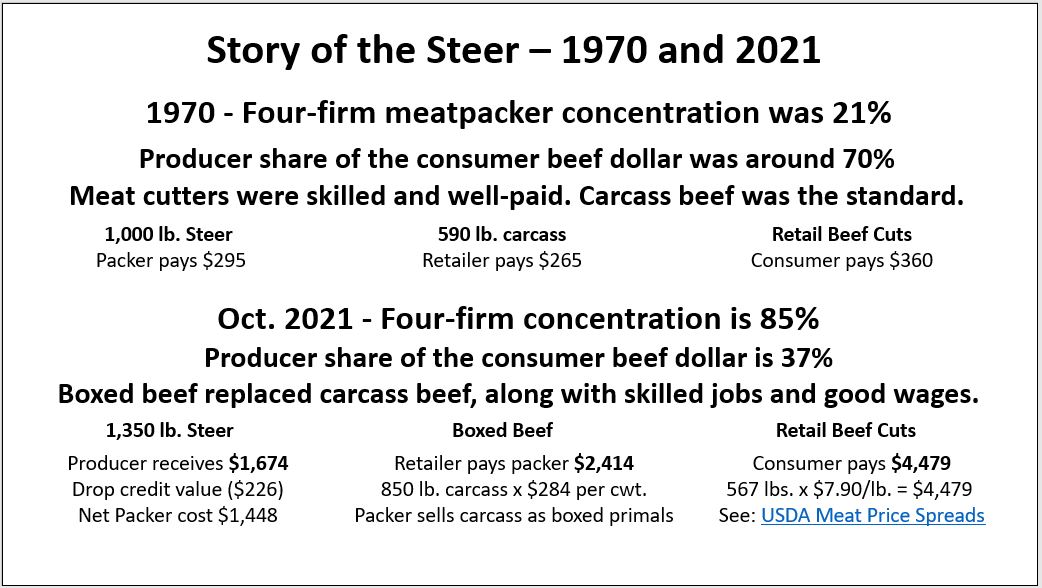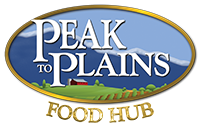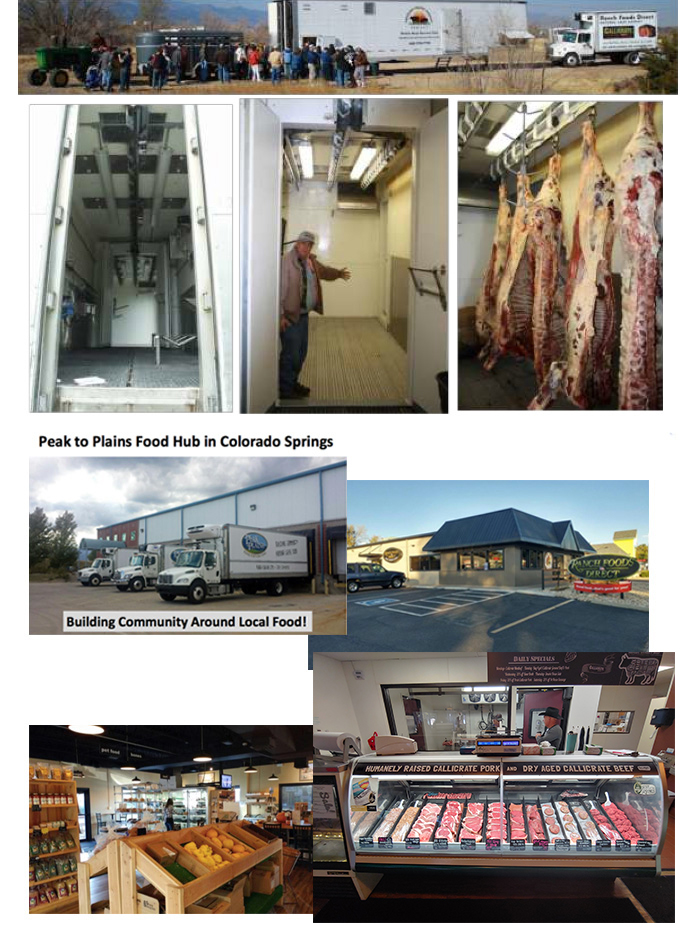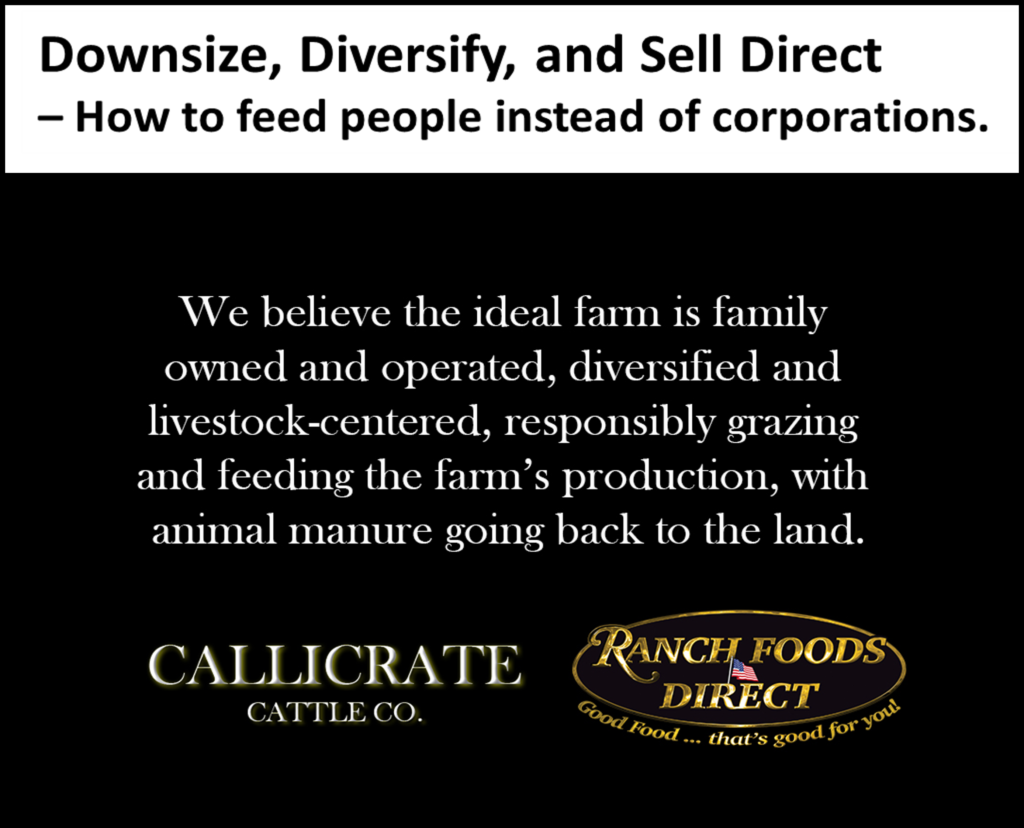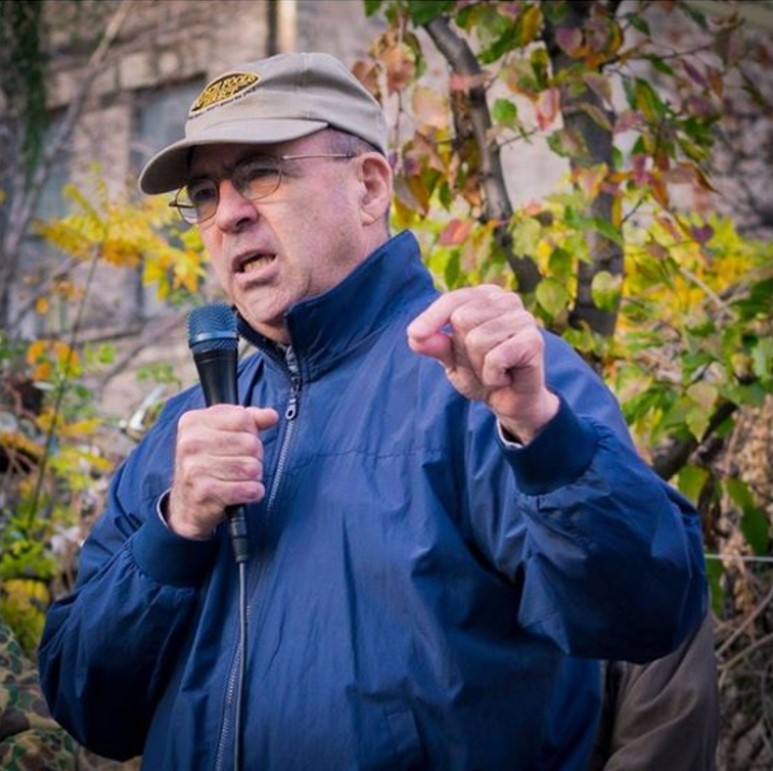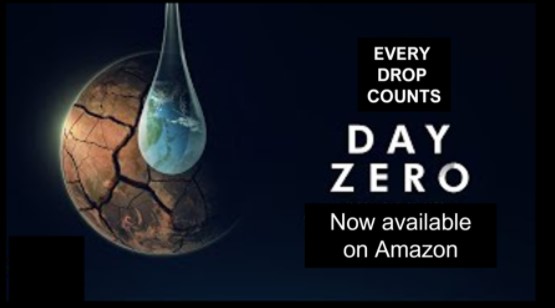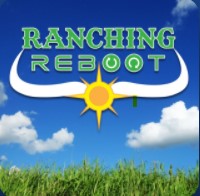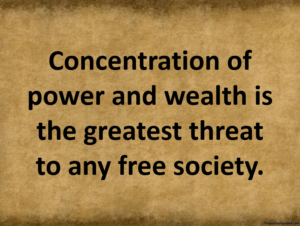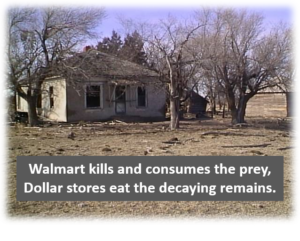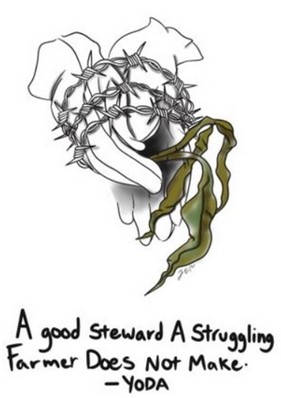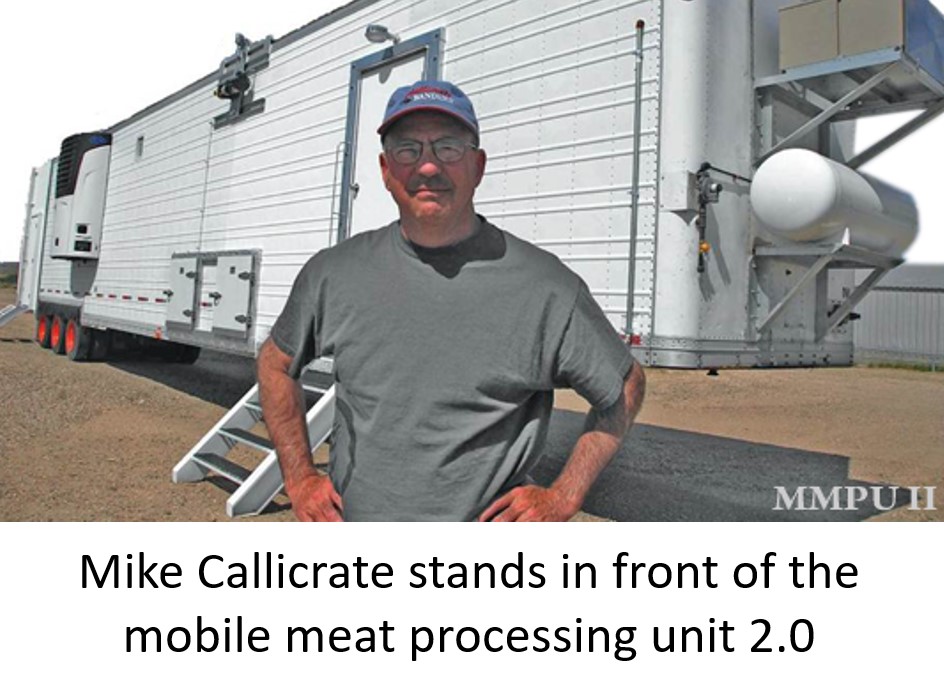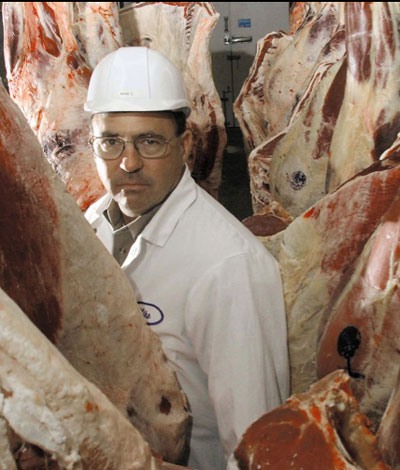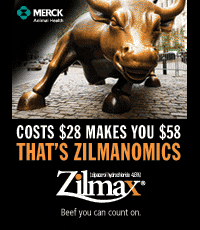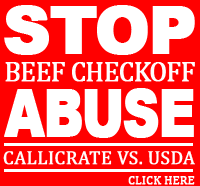SOIL – ‘Saving Our Interdependent Livelihoods’
“In the beginning God entrusted the earth and its resources to the common stewardship of mankind to take care of them, master them by labor, and enjoy their fruits. The goods of creation are destined for the whole human race.” – Catechism of the Catholic Church
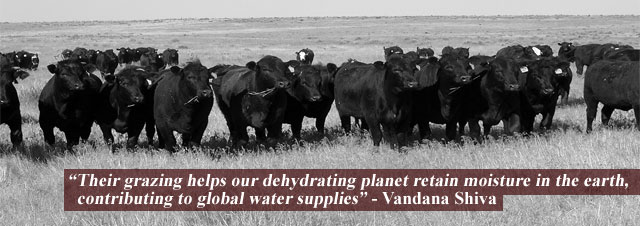
“Our cow dung is worth more than your Wall Street Stocks” – Vandana Shiva speaking to Hillary Clinton in India. Read “In Praise of Cow Dung” by Vandana Shiva
November 2012
Our food system has been captured by Big Food, a handful of very large agribusiness, distribution and retail corporations that place profit over people1, animals, and the environment. We have lost major population in our farming and ranching communities, where Main Streets are dying, farms are disappearing, soil is eroding, and water and air is becoming more and more polluted by Big Food’s industrial model of agriculture. Communities, both rural and urban, are food insecure. America is now a net food importer, dependent on other nations and global corporations to eat. Independent family farmers and ranchers, traditionally the best stewards of our land and livestock, have been, and continue to be systematically driven out of business. American food sovereignty is a thing of the past. Our food system is now fully under the control of global corporations.
How can our good stewards be returned to the land to provide nourishing food for all of us, while providing proper care for our soils and livestock?
Family farm and ranch advocacy groups have worked diligently for many years, through litigation and legislation, to restore good health and sustainability to our farming and food system. Little to no progress has been made. The power of big agribusiness prevails either in the initial defeat of court cases and legislative efforts or in the appeal and rule-making process – big agribusiness has always won2 any battle to reduce their abusive monopoly power3
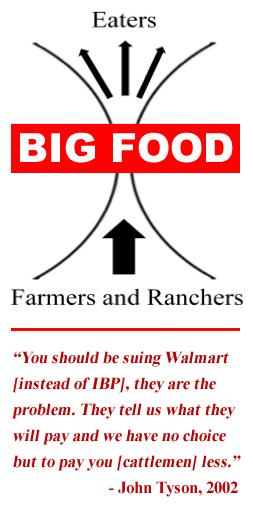
New infrastructures connecting independent family farmers and ranchers to consuming communities must be built, supported and protected. These new pathways must avoid the destructive monopoly power of Big Food. As our government provides safe passage for global oil companies from the most dangerous places on earth to the highest consuming markets, it fails to protect farmers and ranchers from the Big Food market predators in reaching the consumer. The USDA, U.S. Department of Justice and the Federal Trade Commission have bought into the de-reg/no-rules mentality4 promoted by Wall Street, facilitating the demise of fair, open and competitive markets.
In the Food and Water Watch, November 2012 report, The Economic Cost of Food Monopolies5, the conclusion is clear, “Future farm policy should focus on access to fair and open markets that benefit farmers, workers, consumers and the marketplace. At every point in the food chain, there are a handful of companies squeezing profits out of farmers, wages out of workers and choices out of eaters. A more vibrant marketplace with more choices for farmers and consumers is essential, but it cannot happen without breaking up the agribusiness cartels.”
SOIL represents a third possible solution, in addition to litigation and legislation – building an alternative food infrastructure that reconnects family farms and ranches as directly as possible to consumers.
The SOIL INITIATIVE is dedicated to development of sustainable and resilient local/regional food systems that restore a fair income to independent family farmers and ranchers, traditionally the best stewards of our land and livestock, while providing high quality, fresh food to consumers in urban centers. Additional benefits include improved health, food security6, reduced dependence on imported food, and a renewed sense of community.
The economic model uses food production, processing and distribution to anchor a logistics system that provides direct retail market access for small and medium-sized farms and ranches. Successful outcomes can deliver a substantial increase in income at the farm and ranch gate, based on improved market access, reversing the erosion depicted in the following USDA data7:
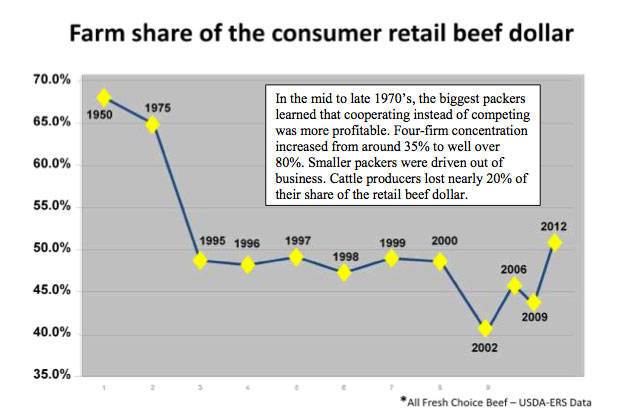
America: Becoming a Land Without Farmers
Evaggelos Vallianatos
September 10, 2012
“The plutocratic remaking of America has a parallel in the countryside. In rural America less than 3 percent of farmers make more than 63 percent of the money, including government subsidies.
The results of this emerging feudal economy are everywhere/ Large areas of the United States are becoming impoverished farm towns with abandoned farmhouses and deserted land. More and more of the countryside has been devoted to massive factory farms and plantations.”
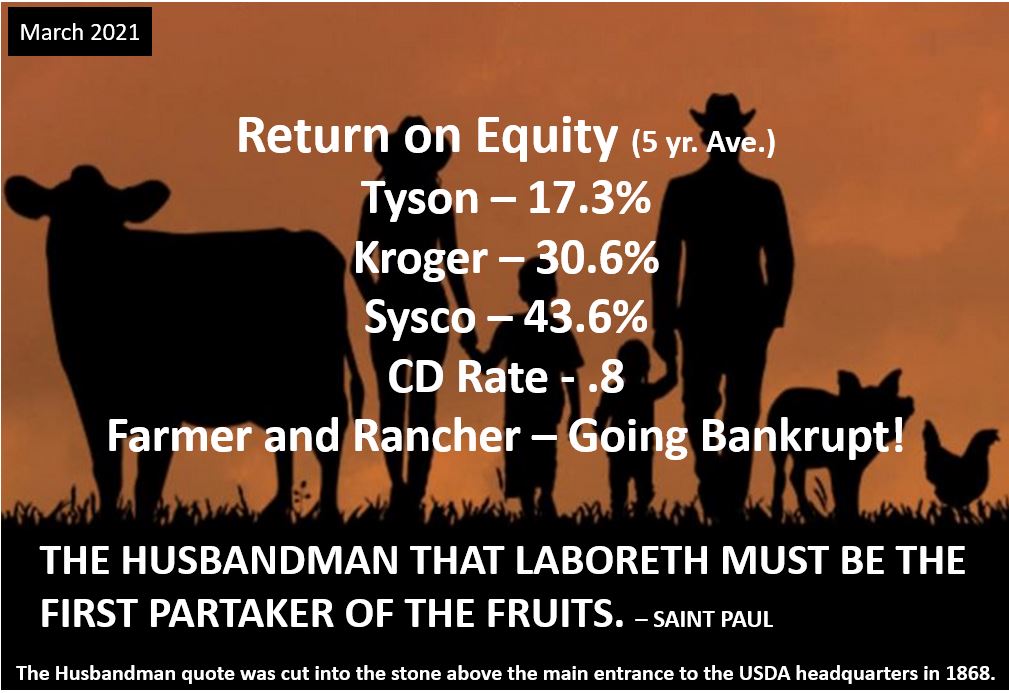
System elements are designed to restore a fair share of the consumer food dollar back to the farm and ranch gate where nearly all the risk is taken, and over 85% of the capital is invested to put meat on our tables:
- Return a major portion of the income lost to “Food Monopolies” to the people and communities who produce our food, while delivering high quality, nutritionally rich and safe food to consumers.
- Use local/regional cooperative networks to reliably return more than the cost of production to farmers and ranchers unable to obtain market access.
- Stimulate economic and community development in both producing and consuming communities.
Business Strategy – Improve Market Access
Increasing concentration in agriculture has nearly eliminated market access for small and medium- sized farms and ranches. Value-added opportunities in meat production, processing and distribution have long been a critical element in the sustainability of smaller scale crop and livestock operations. The traditional locally owned and operated grocery once provided a local value-added base on which to support other foods and dry goods sales as well as a buyer of locally produced meat and produce. Today’s highly concentrated and consolidated modern food system has concentrated production into very large low wage operations, separating the growing of crops from livestock production, turning manure, a once valuable soil building resource, into a source of pollution.
Rural communities have been destroyed as farmers and ranchers have lost their markets along with their fair share of the consumer food dollar. Critical infrastructure for processing and distribution has been dismantled. The Food and Water Watch Report titled, Where’s The Local Beef10, charts the demise of small slaughter plants, described as the linchpin for providing more sustainably raised, locally produced meat. “If we help the small slaughterhouses, it expands out to producers, restaurants and jobs so kids don’t leave the community.11”
The Big Food Cartel controls market access, eliminating traditional family farms, while favoring large industrial operations
See: Story of the Steer and a Theft of Epic Proportions

Note: Farm Share is an indicator of market power. As the meat industry has become more concentrated (35% four firm concentration to over 85%), while touting the benefits of economies of scale and efficiencies, producers have been squeezed. Consumers have paid more for industrial produced, lower quality, highly processed meat.
08:09 Big Food – A Dark Place.
09:30 Big Food – They operate above the law

Mike Callicrate presenting the Mobile Meat Processing Unit at Ventucci Farms in Colorado Springs
The first element in the SOIL Initiative is a new design for small USDA inspected slaughter facilities, including mobile and modular units, employing between 4 and 25 people and processing between ten and 100 animals per day. This category of slaughter operation has experienced the largest decline in the 1997 to 2007 period12. Intent is to reverse the decline of small, local and regional slaughter operations, restoring the economic opportunity of small and medium-sized farms and ranches to have animals prepared for marketing more directly to consumers.
Local slaughtering reduces transportation costs, by eliminating the high-cost step of transporting live animals. Approximately 35% less weight is moved in the form of carcasses, compared to live animals. In addition, live animals lose significant amounts of weight during transport and stress factors affect meat quality adversely.
Carcass transport enables the second element in the SOIL Initiative , connecting producers and consumers by aggregating shipment (ideally with fruits and vegetables) in a logistics system. Refrigerated trucks routinely transporting carcasses can also transport other farm produce, including fruits, vegetables, eggs, etc., and other retail and wholesale value-added foods.
The third element in the SOIL Initiative involves further processing from the carcass to final retail cuts, conducted in high population urban centers through year-round public markets that include food hubs, commissary kitchens and other value-added enterprises such as cheese making, milling and baking operations. This market access infrastructure may be managed through various forms of ownership, including cooperatives of independent producers and consumers.
Business Strategy – Generate Incremental Revenue
Increasing concentration in agriculture has reduced net farm income13. Monopoly pricing on inputs, including seed, fertilizer and energy, has increased the cost of production. At the same time, monopsony and oligopoly power in production – in feedlots, packing and processing – and in mass distribution and retailing leave small and medium sized farms and ranches without markets.

The SOIL Initiative establishes a viable and replicable value chain that uses small-scale regional production, processing, distribution, and retail sales as a core business model, complemented by aggregation of seasonal and year-round local produce.
Steps include:
- A new, low cost multi-species slaughter facility design, located in rural communities.
- Local slaughter to eliminate the high-cost, low-efficiency step in the value chain – transporting live animals.
- Where possible, aggregating rural produce for transport, reducing overall cost of transport and reducing the amount of time required by farmers to move their production from the farm to consuming communities.
- Using urban carcass fabrication facilities to wholesale and retail meat and other farm produce and value-added products.
- Where possible, operating slaughter, transport, fabrication and retail operations through producer/consumer owned cooperatives.
- Expanding market opportunities and systematic cost reduction to increase farm, ranch and rural community share of the consumer food dollar.
- Improve consumer access on a much broader scale to locally produced, fresh, whole and healthy foods.
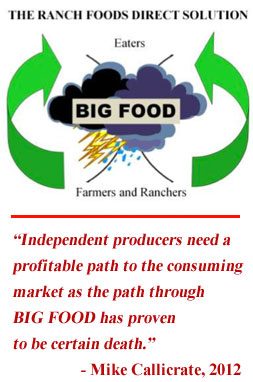 This business model is an expansion and/or replication of the present Ranch Foods Direct network. Ranch Foods Direct is a retail outlet for Callicrate Cattle Company, a diversified multi species operation, including a cow/calf and feedlot operation, based in St. Francis, Kansas. Cattle, lambs, goats, and hogs are slaughtered onsite and then transported and fabricated in the Ranch Foods Direct plant in Colorado Springs. The carcass fabrication facility inside the Peak to Plains Food Hub also serves a number of other producers. Two Ranch Foods Direct retail stores, one connected to the food hub and fabrication facility, are outlets for Callicrate Cattle Co. as well as a number of other producers of various kinds of farm produce and value-added products. The food hub serves as an aggregation and distribution point for the SOCO virtual Farmers Market and Ahavah Farm Community Supported Agriculture (CSA).
This business model is an expansion and/or replication of the present Ranch Foods Direct network. Ranch Foods Direct is a retail outlet for Callicrate Cattle Company, a diversified multi species operation, including a cow/calf and feedlot operation, based in St. Francis, Kansas. Cattle, lambs, goats, and hogs are slaughtered onsite and then transported and fabricated in the Ranch Foods Direct plant in Colorado Springs. The carcass fabrication facility inside the Peak to Plains Food Hub also serves a number of other producers. Two Ranch Foods Direct retail stores, one connected to the food hub and fabrication facility, are outlets for Callicrate Cattle Co. as well as a number of other producers of various kinds of farm produce and value-added products. The food hub serves as an aggregation and distribution point for the SOCO virtual Farmers Market and Ahavah Farm Community Supported Agriculture (CSA).
When we lose our markets, we lose our freedom
Market access is essentially nonexistent for these smaller producers. Small producers are unable to schedule timely slaughter at the very limited number of local slaughter facilities, where capacity is near fully utilized by large and industrial producers. Due to the scale of their operations and seasonal availability of production, smaller producers have very limited opportunity to reach retail customers through mass merchandisers. Where there are retail opportunities through mass merchants, pricing is low – most often below the cost of production. The joint efforts of rural producers can support small scale slaughter operations, provided that capital requirements are low. At the same time, fabrication and other further processing in urban centers can provide good paying jobs in a value-added framework while supporting a year-round PUBLIC/FARMERS MARKET in which producers can receive a larger portion of the retail food dollar and consumers a dependable source of good food.
A better more direct route for producers and consumers wanting to know where their food comes from …
The three elements of the SOIL Initiative connect components in an evolving local food movement. These connections, through rural slaughter, cost reduction in transport and urban fabrication connected to a year-round PUBLIC/FARMERS MARKET, overcome present lack of linkage between rural producers and urban consumers. These connections provide market access and permit producers to retain an optimum share of retail revenue at the farm and ranch gate. Based on changes in the competitive environment14, the SOIL initiative may be a viable template in many markets in the United States.
The Callicrate Cattle Co./Ranch Foods Direct/Peak to Plains Food Hub model has joined producers in Western Kansas, Eastern and Southern Colorado with consumers along the Front Range.
- Slaughter facilities are limited and fully utilized, making it costly and difficult for livestock producers to make product available at an optimum price or time.
- There is an active and coordinated group of local farms and ranches, and a growing number of farmers’ markets, including the Colorado Farm and Art Market.
- There is a demonstrated success in joining fabrication with retailing, and as a focal point for distribution of produce and other local foods.
First Element – Slaughter
The economics of local slaughter are well-documented,
- Reducing high cost transport.
- Presenting animals at optimum time and weight and
- Reducing stress and loss of weight during transport and
- Avoiding stress effects on meat quality that occur during transport.
- Utilizing slaughter waste as fertilizer by composting with manure from livestock operations.
The Callicrate Cattle Company is operating a mobile slaughter facility located in St. Francis, (Western) Kansas.
Second Element – Logistics
Ranch Foods Direct, in moving carcasses, and other farm production, from Western Kansas to Colorado Springs, uses company-owned vehicles and larger commercial transportation depending on needs. Ranch Foods Direct is currently the destination for other cattle and livestock, such as hogs, lambs and goats slaughtered in the Western Kansas facility.
Third Element – Retail and Wholesale Market Access
Expand Ranch Foods Direct retail and wholesale in collaboration with Arkansas Valley Organic Growers (AVOG), members of the Colorado Farm and Art Market and other local producers in providing impetus for urban redevelopment16 in Colorado Springs.
Replicate the Peak to Plains/Ranch Foods Direct model in other regions.
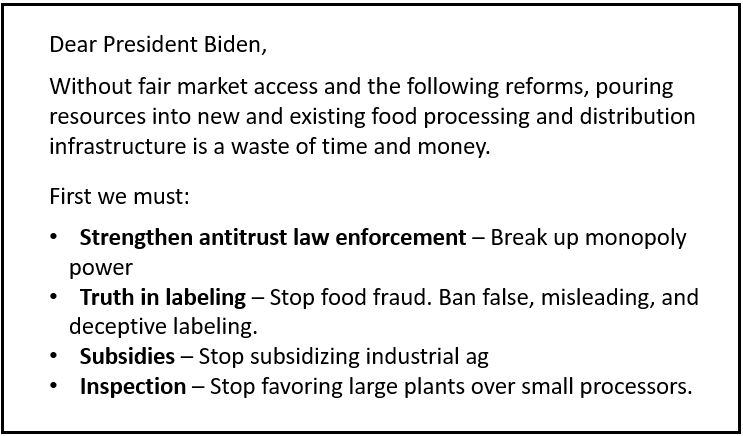
See: Dear President Biden – Regarding Food System Reform
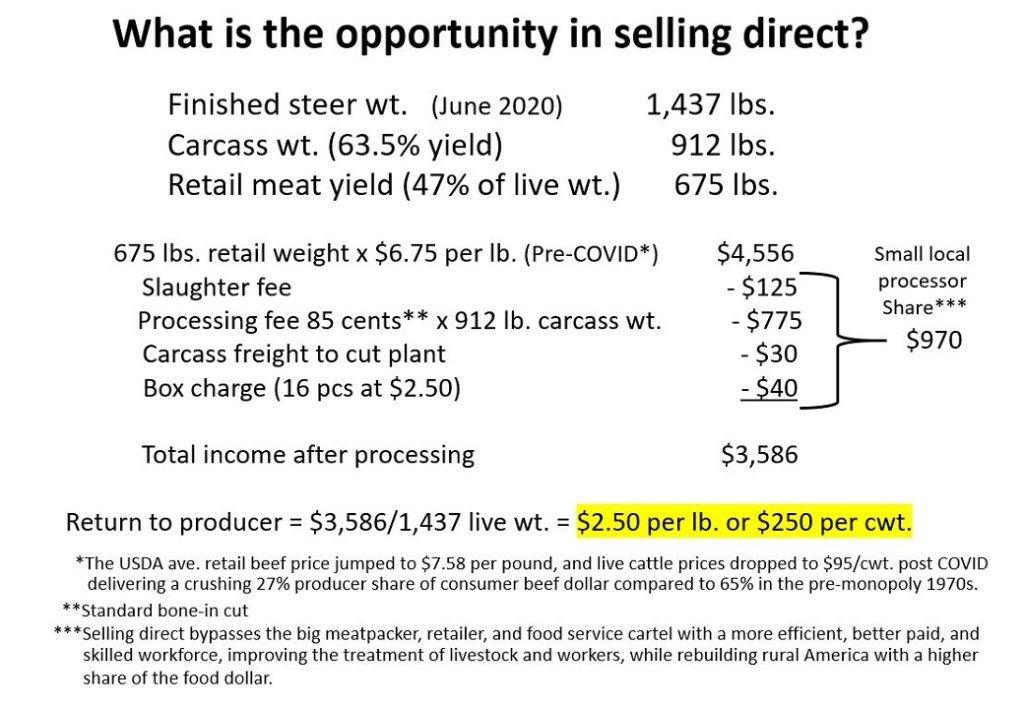
The SOIL Initiative combines evolving technology in a new slaughter design, with a new logistics framework, while returning to a proven retailing model. This new value chain, capable of restoring the economic health of small to medium-sized farms and ranches, and their rural communities, can also play an important role in revitalizing blighted urban areas and food deserts.
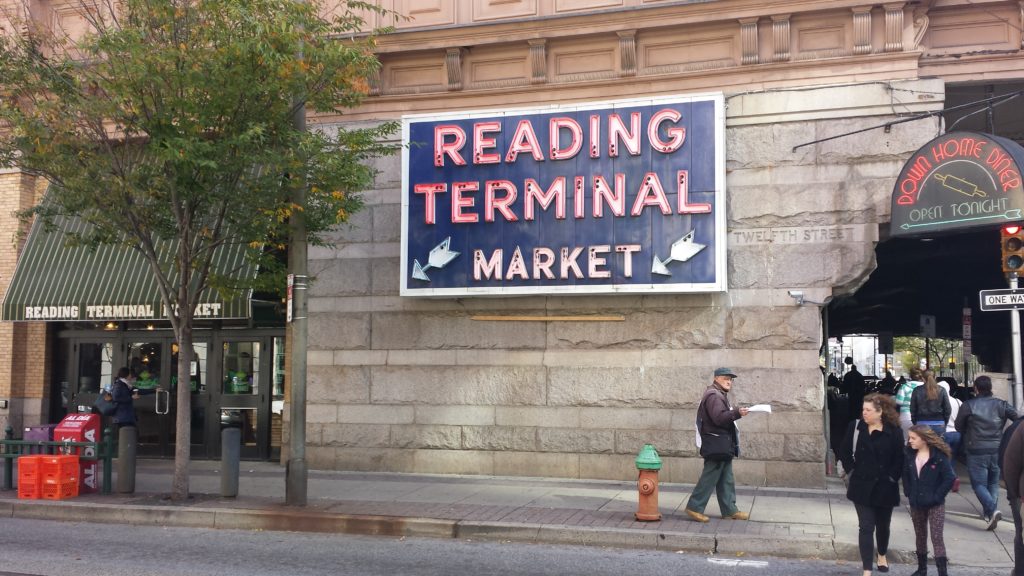
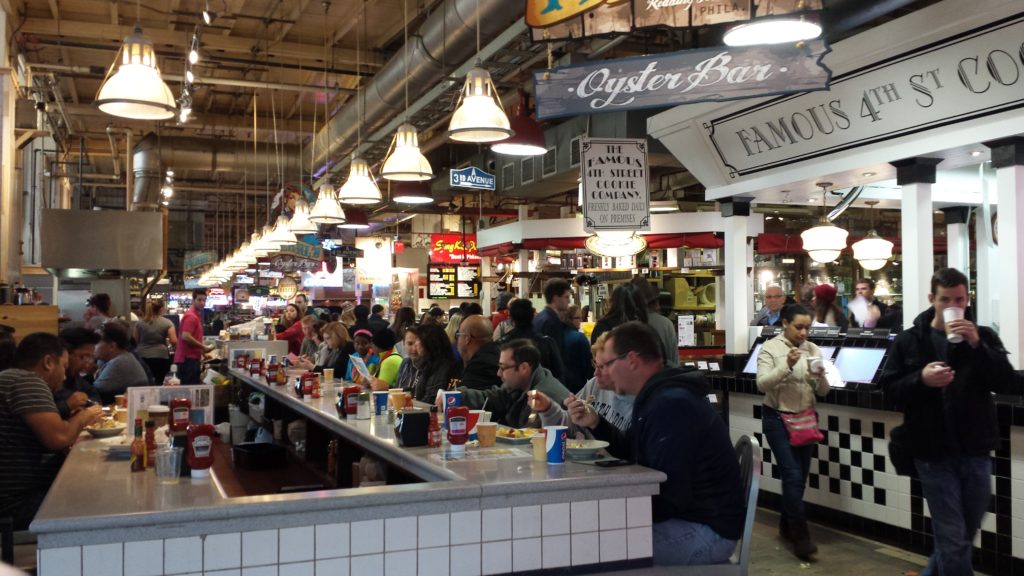 Creating new community spaces for eaters, growers, family farmers, ranchers and local businesses, separate and safe from Big Food and Wall Street, like the Reading Terminal Market in Philadelphia.
Creating new community spaces for eaters, growers, family farmers, ranchers and local businesses, separate and safe from Big Food and Wall Street, like the Reading Terminal Market in Philadelphia.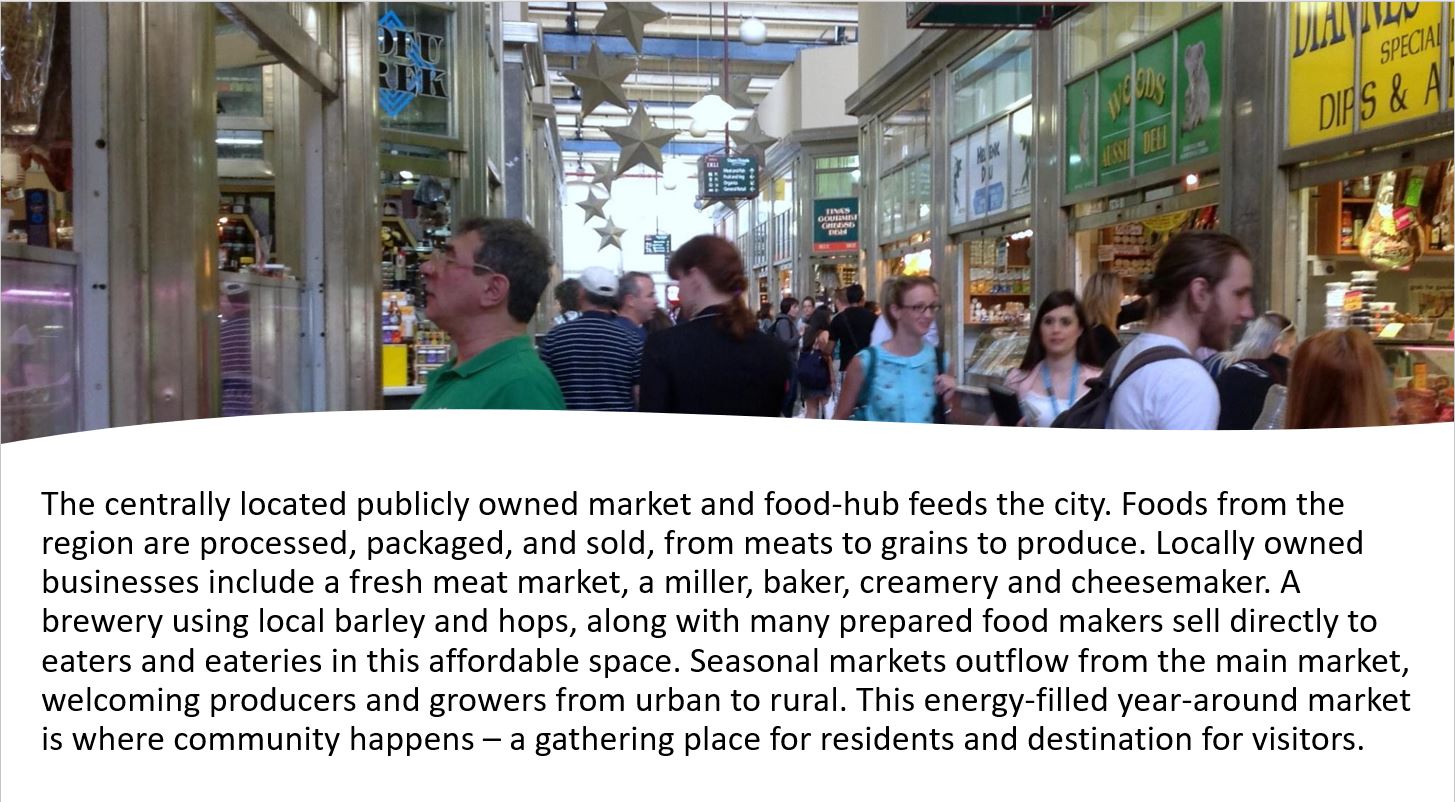
See: Let’s Feed People Instead of Corporations
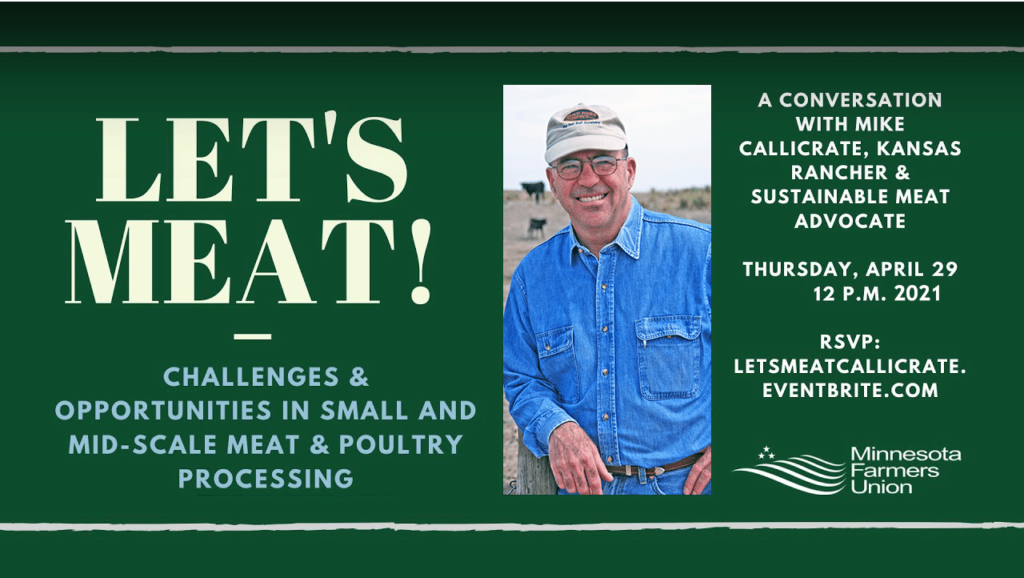 See: Let’s Meat – Challenges & opportunities in small and mid-scale meat and poultry processing
See: Let’s Meat – Challenges & opportunities in small and mid-scale meat and poultry processing
The SOIL INITIATIVE model is a template for a resilient and sustainable family farm and ranch, local/regional agricultural and food system, connecting rural producers directly with their urban customers. Meat production serving as the backbone for logistics, humane slaughter where animals are raised, improved meat quality, converting slaughter waste to soil nutrients, with fuel savings in transport, is an entirely new combination of technologies and enterprises. Urban based cutting and fabrication operations that include retailing is a return to a time when consumers considered their butcher a trusted and indispensable member of the community, and when a fresh meat market was the base for grocery store and public market operations. Outcomes are the embodiment and the stated intent of USDA’s “Know your Farmer, Know Your Food” initiative.
http://www.kuconnection.org/archive/2003/12/places_1.asp 2 Obama’s Game of Chicken published in Washington Monthly, November 2012
http://www.competitivemarkets.com/obamas-game-of-chicken/3 Cornered by Barry C. Lynn – The new monopoly capitalism and the economics of destruction
http://www.barryclynn.com/?page_id=254 Why You Can Thank Dan Quayle for 20 Years of Policy That Keeps Americans in the Dark About Their Food
https://nobull.mikecallicrate.com/2012/05/30/why-you-can-thank-dan-quayle-for-20-years-of-policy-that-keeps-americans-in-the-dark-about-their-food/5 The Economic Cost of Food Monopolies published by Food & Water Watch
http://www.foodandwaterwatch.org/reports/the-economic-cost-of-food-monopolies/6 Anderson, M.D., Beyond food security to realizing food rights in the US, Journal of Rural Studies (2012),
http://dx.doi.org/10.1016/j.jrurstud.2012.09.004
7 USDA-ERS Data
http://www.ers.usda.gov/Data/pricespreads/
8 Packers–for those with sales > $500k – Before tax ROE, 2002-2009: 17.38%
http://www.bizminer.com/industries/Meat-packing-plants-2011/
Retail grocery food marketing institute book average: before tax ROE = 20.75% Cattle for the farm typology “cattle” meaning primarily cattle operations published in USDA/ERS annual surveys 2003-2009
http://www.fmi.org
http://www.ers.usda.gov/Briefing/ARMS/
9 The Economic Cost of Food Monopolies published by Food & Water Watch
http://www.foodandwaterwatch.org/reports/the-economic-cost-of-food-monopolies/
10 Where’s the local beef? published by Food and Water Watch, November 2012
http://www.foodandwaterwatch.org/tools-and-resources/wheres-the-local-beef/
11 Page 17 Joellen Feirtag, University of Minnesota extension services.
12 Hendrickson, M. and W. Heffernan. “Concentration of Agricultural Markets.” April 2007.
www.nfu.org/issues/economic-policy/resources/heffernan-report
13 USDA-ERS Data
http://www.ers.usda.gov/Data/pricespreads/
14 Mobile Meat Processing
http://www.mobilemeatprocessing.com/
15 You Are Where You Eat: Re-Focusing Communities Around Markets, by Project for Public Spaces on Jul 18, 2012
http://www.pps.org/you-are-where-you-eat-re-focusing-communities-around-markets/#
16 The Local Food Shift Meets Occupy Boulder published November 27, 2011
http://eatlocalguide.com/bouldercounty/catalyzing-the-local-food-shift/
Soil Power! The Dirty Way to a Green Planet by The New York Times published December 2, 2017
https://www.nytimes.com/2017/12/02/opinion/sunday/soil-power-the-dirty-way-to-a-green-planet.html
Soil scientists Dr. Christine Jones and Elaine Ingham share various methods that can return carbon to the soil and keep it there—for healthier crops and more resilient farms.
https://www.facebook.com/doctor.health/videos/vb.114205065589/10153600942560590/?type=2&theater
AgWeb: Cover Crops And Cattle Are Cash
https://www.agweb.com/article/cover-crops-and-cattle-are-cash-naa-chris-bennett/
John Ikerd’s
Community Food Utilities

